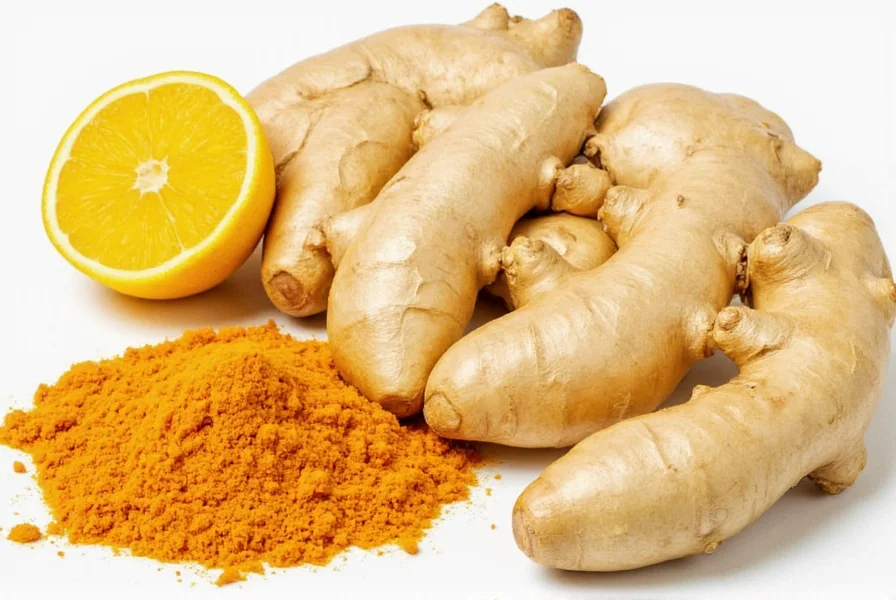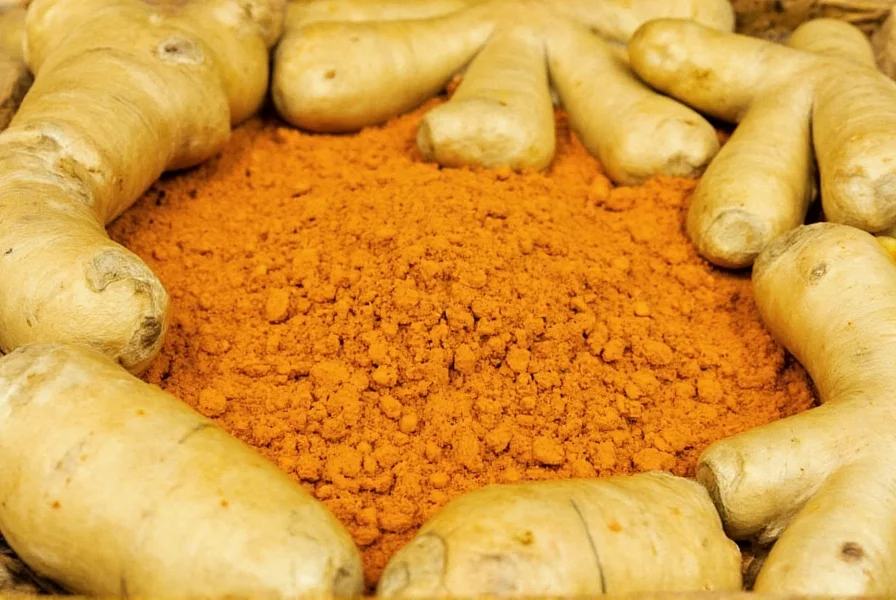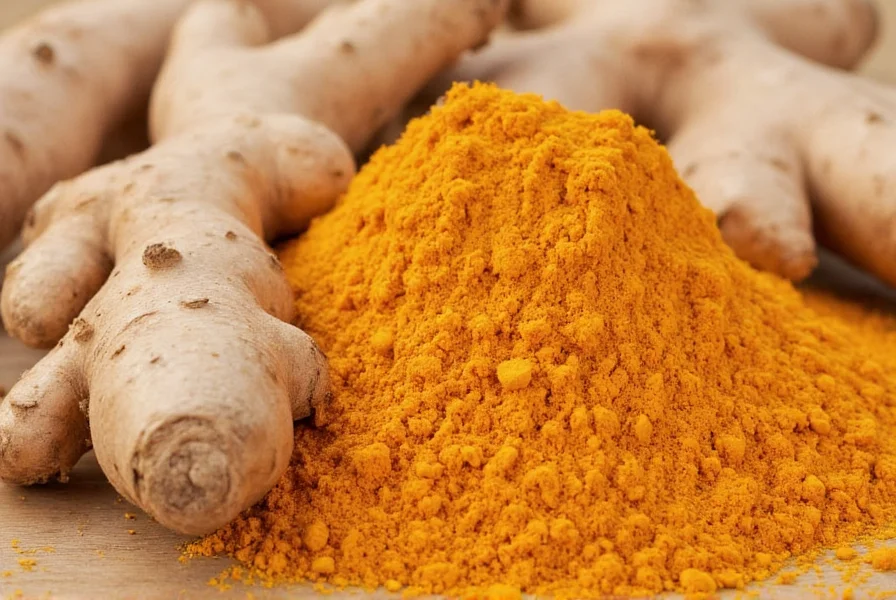Understanding Curcuma and Ginger: Nature's Potent Botanicals
Curcuma (Curcuma longa), commonly known as turmeric, and ginger (Zingiber officinale) have been used for centuries in traditional medicine systems across Asia. While often confused due to their similar appearance and shared health applications, these two rhizomes offer distinct biochemical profiles and therapeutic benefits. Modern scientific research has increasingly validated many of their traditional uses, particularly regarding their anti-inflammatory mechanisms and antioxidant capacities.

Scientific Profiles: Active Compounds and Bioavailability
Curcuma's primary bioactive compound is curcumin, which constitutes about 2-8% of the rhizome. Curcumin demonstrates potent anti-inflammatory effects by inhibiting multiple inflammation pathways, including NF-kB and COX-2 enzymes. However, curcumin faces significant bioavailability challenges—it's poorly absorbed, rapidly metabolized, and quickly eliminated from the body. This explains why traditional preparations often combine turmeric with black pepper (containing piperine) or fats to enhance absorption.
Ginger contains gingerols as its main active constituents, particularly 6-gingerol. These compounds provide ginger's characteristic pungency and therapeutic effects. Unlike curcuma, ginger demonstrates relatively good bioavailability, with studies showing 6-gingerol absorption rates of approximately 30-40% in humans. Gingerols work through different mechanisms than curcumin, primarily affecting TRPV1 receptors and prostaglandin synthesis.
| Property | Curcuma (Turmeric) | Ginger |
|---|---|---|
| Primary Active Compound | Curcumin (2-8%) | Gingerols (3-6%) |
| Bioavailability | Low (enhanced with piperine/fats) | Moderate (30-40%) |
| Key Mechanisms | NF-kB, COX-2 inhibition | TRPV1, prostaglandin modulation |
| Traditional Uses | Wound healing, joint pain | Digestive issues, nausea |
Comparative Health Benefits: What Research Reveals
When examining the health benefits of curcuma and ginger, scientific evidence reveals both overlapping and distinct therapeutic applications. Multiple systematic reviews have confirmed curcuma's effectiveness for osteoarthritis management, with one 2022 meta-analysis in Phytotherapy Research showing curcumin supplementation significantly reduced pain scores compared to placebo. Ginger demonstrates particularly strong evidence for nausea relief, especially in pregnancy and chemotherapy-induced nausea, with effectiveness comparable to conventional antiemetics in some studies.
The anti-inflammatory properties of curcuma vs ginger present interesting differences. Curcuma appears more effective for chronic inflammatory conditions like arthritis due to its broader impact on inflammatory pathways, while ginger shows stronger immediate effects on acute inflammation and muscle pain. A 2021 study in Nutrients found that combining both botanicals created synergistic effects, enhancing their individual anti-inflammatory capabilities through complementary mechanisms.
Digestive Health Applications
Both botanicals offer significant digestive health benefits, though through different mechanisms. Curcuma stimulates bile production, which aids fat digestion and may help prevent gallstone formation. Ginger, meanwhile, accelerates gastric emptying and reduces intestinal spasms. Research published in Food Science & Nutrition demonstrated that ginger supplementation reduced symptoms of functional dyspepsia by 25% compared to placebo.
For individuals seeking natural digestive support, understanding these differences is crucial. Those with sluggish digestion might benefit more from curcuma's bile-stimulating effects, while those experiencing nausea or gastroparesis may find greater relief with ginger. The combination of both appears particularly effective for general digestive wellness, as shown in traditional Ayurvedic formulations.
Safety Considerations and Practical Usage
While generally safe, both botanicals require consideration of potential interactions. Curcuma may enhance the effects of blood thinners like warfarin, while ginger can interact with anticoagulants and diabetes medications. The recommended daily dosage for standardized curcumin extracts ranges from 500-2,000 mg, while for ginger, 1,000-2,000 mg of dried root or 4,000 mg of fresh root is considered safe for most adults.
Maximizing the health benefits of curcuma and ginger requires attention to preparation methods. For curcuma, combining with black pepper (providing piperine) increases absorption by up to 2,000%. Consuming either with healthy fats further enhances bioavailability. Fresh forms generally provide more complete phytochemical profiles than processed supplements, though standardized extracts offer consistent dosing for therapeutic applications.

Evidence-Based Recommendations
Based on current scientific understanding, these evidence-based recommendations can help optimize the use of curcuma and ginger:
- For chronic inflammation: Prioritize curcuma with enhanced bioavailability formulations
- For acute nausea or motion sickness: Ginger shows faster onset of action
- For comprehensive anti-inflammatory support: Consider combining both botanicals
- For digestive issues: Match the botanical to your specific symptom profile
- For maximum absorption: Always consume curcuma with black pepper and healthy fats
While promising, it's important to note that neither curcuma nor ginger should replace conventional medical treatments for serious conditions. They work best as complementary approaches within a comprehensive health strategy. Consultation with healthcare providers is essential, particularly for individuals with existing health conditions or those taking medications.
Frequently Asked Questions
What's the difference between curcuma and turmeric?
Curcuma is the botanical name for the plant (Curcuma longa), while turmeric is the common name for the spice derived from its rhizome. They refer to the same plant, with curcuma being the scientific term and turmeric the culinary and traditional medicine term.
Can I take curcuma and ginger together safely?
Yes, curcuma and ginger can generally be taken together safely and may provide synergistic benefits. Research suggests their combined anti-inflammatory effects are greater than either alone. However, individuals on blood thinners should consult their healthcare provider first, as both have mild anticoagulant properties.
How much curcuma should I take for inflammation?
For inflammation, research suggests 500-2,000 mg of standardized curcumin extract daily. Since curcumin has poor bioavailability, look for formulations containing piperine (from black pepper) or phospholipids. Whole turmeric powder would require significantly higher amounts (3,000-8,000 mg) to achieve similar effects due to lower curcumin concentration.
Which is better for arthritis: curcuma or ginger?
Both show benefits for arthritis, but curcuma generally demonstrates stronger evidence for osteoarthritis management. Multiple studies show curcumin's effectiveness comparable to NSAIDs for pain relief. Ginger may be more effective for rheumatoid arthritis due to its different mechanism of action. Some research suggests combining both provides the most comprehensive joint support.
Does fresh ginger have more benefits than powdered?
Fresh ginger contains higher levels of gingerols, while dried ginger has more shogaols (a dehydrated form of gingerols with potentially stronger effects). Fresh ginger may be better for nausea relief, while dried ginger shows stronger anti-inflammatory properties. Both forms offer significant health benefits, with the choice depending on specific health goals and preparation methods.











 浙公网安备
33010002000092号
浙公网安备
33010002000092号 浙B2-20120091-4
浙B2-20120091-4